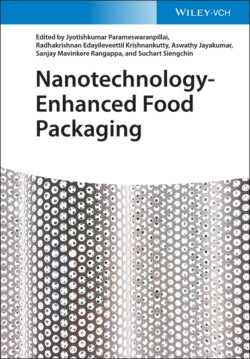Читать книгу Nanotechnology-Enhanced Food Packaging - Группа авторов - Страница 21
1.6 Nanocoats Used in Food Manufacturing
ОглавлениеEdible coatings are either applied to or formed directly on foods, whereas edible films are self-supporting structures used to wrap food products and also located in between two food components. It is a fact that such coatings may act as a barrier to heat, moisture, and gas. Coatings are added and formulated either by applying a liquid film-forming solution or directly on the food component with molten compounds. Edible coatings may be divided into two categories: polysaccharides and lipids and both of these categories are hydro-soluble. The best lipids are waxes, acylglycerols, and fatty acids, and among them, lipid films have excellent moisture capture properties and are used to color gloss on candy products as coloring agents. On the other side, waxes are commonly used to cover fruit and vegetables to delay breathing and rising moisture shortages [50].
Today, an edible coating is used for a large range of foodstuffs including nuts, potatoes, poultry, candy, dairy, cookies, pastry, and French fried products. Nonetheless, few research studies have identified nanoparticles in coating films to enhance their physical properties. Montmorillonite clay has been applied to pectins to reduce oxygen diffusion. Also, nanocomposites prepared for gelatin and montmorillonite have been used to improve physical properties. The efficiency of chitosan-layered nanocomposites was also greatly improved [51].
